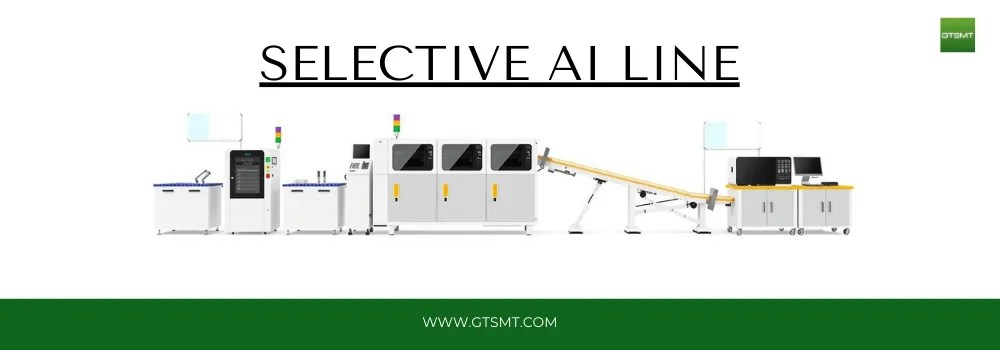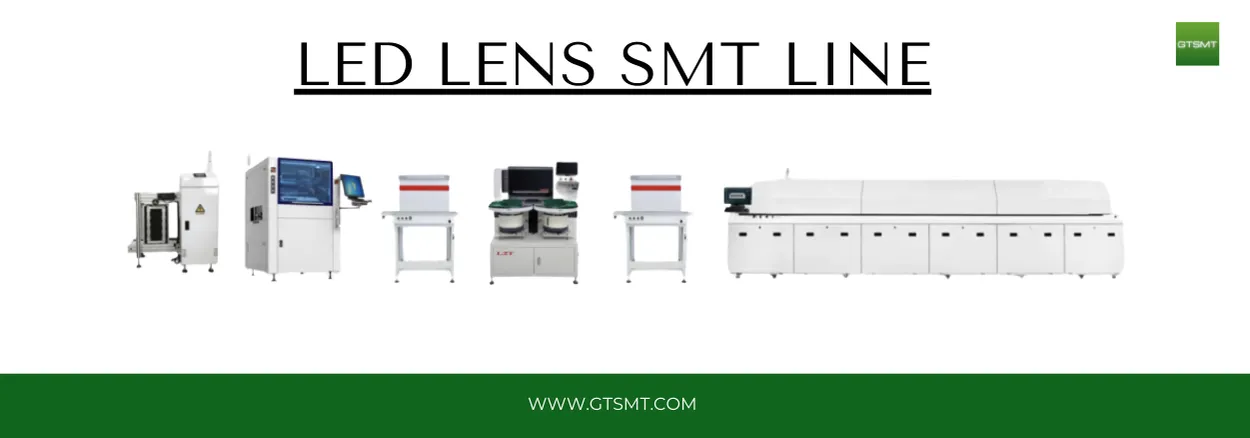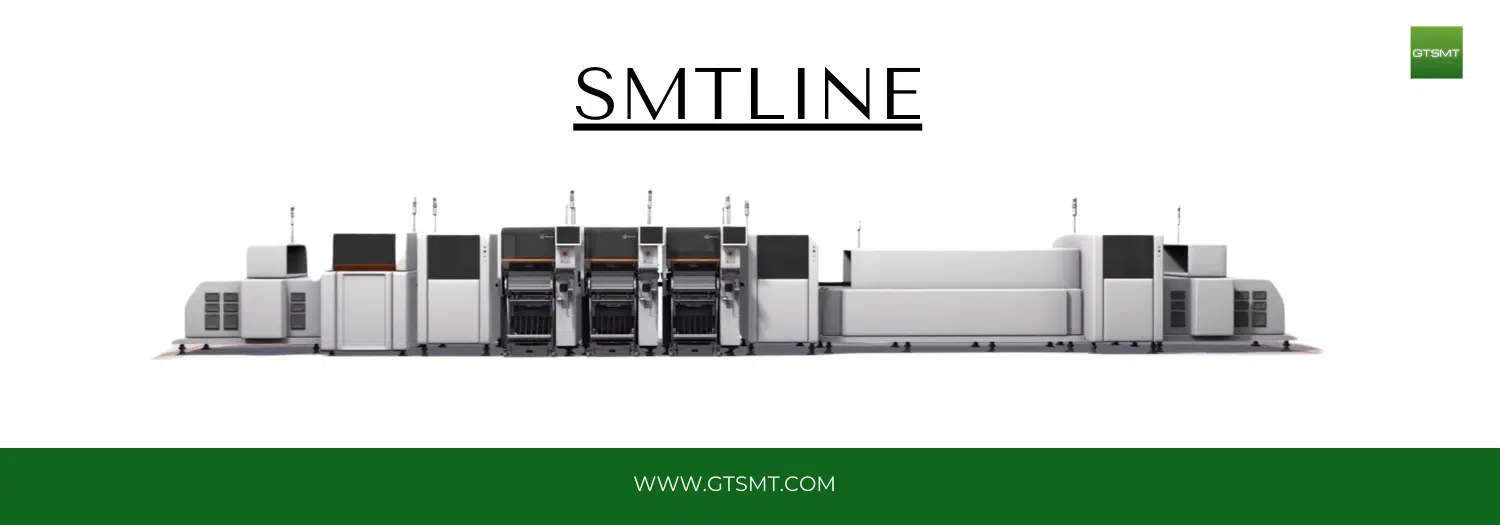
What is an SMT Line?
An SMT (Surface Mount Technology) line is an automated assembly line used to mount electronic components directly onto printed circuit boards (PCBs). Unlike traditional through-hole technology, SMT components are smaller, placed on the PCB surface, and soldered using reflow ovens. This method allows for:
- Higher component density (smaller devices).
- Faster production speeds.
- Improved reliability and performance.
SMT lines are the backbone of modern electronics manufacturing, used for everything from medical devices to automotive systems.
How to Start Your SMT Production Line
Starting an SMT line requires careful planning. Here’s a step-by-step breakdown:
- Define Your Requirements
- Product Needs: Determine the size, complexity, and volume of PCBs you’ll produce.
- Budget: Estimate initial investment and operational costs (more on this below).
- Space: Allocate a clean, temperature-controlled workspace (ESD-safe environment).
- Design and Prototyping
- Finalize PCB designs using CAD software.
- Order stencils for solder paste application.
- Test prototypes to identify design flaws early.
- Procure Equipment
- Source core SMT machines (see Equipment section below).
- Partner with reliable suppliers for solder paste, components, and consumables.
- Set Up the Line
- Arrange machines in sequence: solder paste printer → pick-and-place → reflow oven → inspection.
- Integrate conveyor systems for seamless PCB movement.
- Training and Calibration
- Train operators on machine use, programming, and troubleshooting.
- Calibrate equipment for precision (e.g., solder paste thickness, placement accuracy).
- Test and Optimize
- Run pilot batches to refine processes.
- AOI (Automated Optical Inspection) or X-ray systems are used to detect defects.
- Scale Production
- Gradually increase output while maintaining quality control.
Types of SMT Lines
SMT lines vary based on automation and production capacity:
- Fully Automatic Lines
- Setup: Fully automated from paste printing to inspection.
- Use Case: High-volume manufacturing (e.g., consumer electronics).
Cost to Set Up a Standard SMT Line
Costs depend on the automation level and scale:
Sr | Product | Approx Quote USD |
1 | 2500 | |
2 | PCB Conveyor | 500 |
3 | Solder Paste Printer | 20000 ~ 35000 |
4 | Pick and Place | 50000 ~ 80000 |
5 | Reflow Oven | 20000~ 40000 |
6 | SPI Inspection | 30000 ~ 50000 |
7 | AOI Inspection | 50000 ~ 100000 |
8 | PCB Unloader | 2800 |
Additional Costs:
- Facility upgrades (power, HVAC).
- Labor, training, and maintenance.
- Solder paste, components, and spare parts.
Equipment Selection
Sr | Model | Qty | |
1 | 1 | ||
2 | 1 | ||
3 | 1 | ||
4 | 1 | ||
5 | 1 | ||
6 | PCB Conveyor | CY-1200 | 1 |
7 | 1 | ||
8 | 2D Inline | 1 | |
9 | PCB Conveyor | CY-1200 | 1 |
10 | GT-400UL | 1 | |
Note that these types of equipment are standard industry smt line equipment | |||
Preparation Before Installing
| Category | Projects | Details |
| Factory Layout Requirements | Factory Air Circuit Layout | Use a factory air source or a separate oil-free compressed air machine. Pressure should be greater than 7kg/cm2. |
| Factory Electrical Layout | Single-phase AC220 (220±10%, 50/60Hz) Three-phase AC 380V (380±10%, 50/60Hz) | |
| Factory Exhaust Layout | The minimum flow rate of the exhaust duct is 500 cubic feet per minute (14.15m3/min)) | |
| Factory Lighting Layout | The ideal illumination in the factory is 800~1200LUX, at least not less than 300LUX. | |
| Factory Temperature Layout | The ambient temperature of the production workshop is 23±3°C, generally 17~28°C, and the relative humidity is 45%~70%RH. | |
| Material Preparation | BOM List | |
| CAD File | ||
| Gerber File | ||
| Solder Paste | ||
| SMD Component Materials | ||
| Industrial Alcohol | ||
| Splice Belt | ||
| Stencil |
Optional Equipment:
Setting up an SMT line is a significant investment, but it’s essential for staying competitive in electronics manufacturing. Start by assessing your production needs, budget, and long-term goals.
By understanding SMT line, costs, and equipment involved, you’ll be well-equipped to make informed decisions and streamline your production process.
Learn about the truth of smt equipment

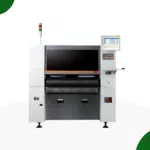 Pick and Place
Pick and Place
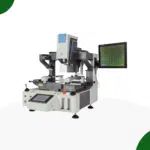 Rework Station
Rework Station
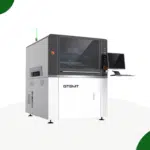 Solder Paste Printers
Solder Paste Printers
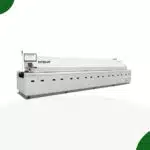 Reflow Ovens
Reflow Ovens
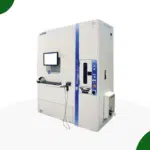 Reel Storage System
Reel Storage System
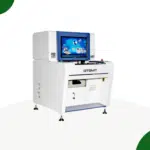 AOI & SPI INSPECTION
AOI & SPI INSPECTION
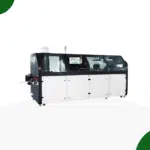 Soldering Machines
Soldering Machines
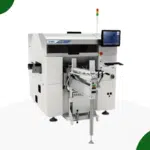 Insertion Machine
Insertion Machine
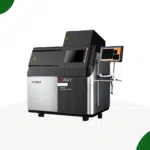 X-ray inspection
X-ray inspection
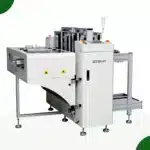 PCB Handeling
PCB Handeling
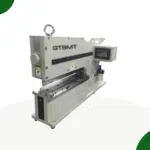 Depaneling Machine
Depaneling Machine
